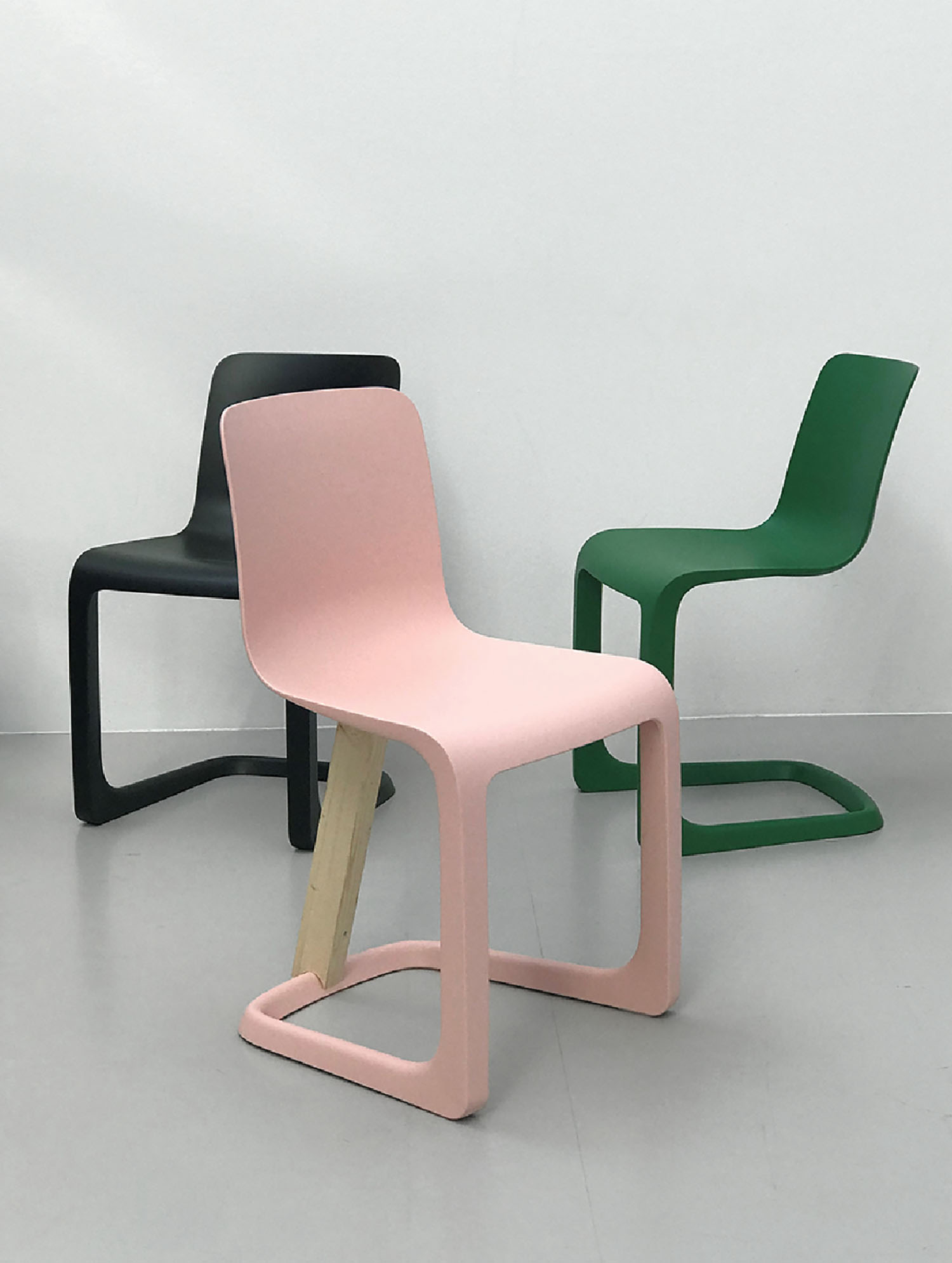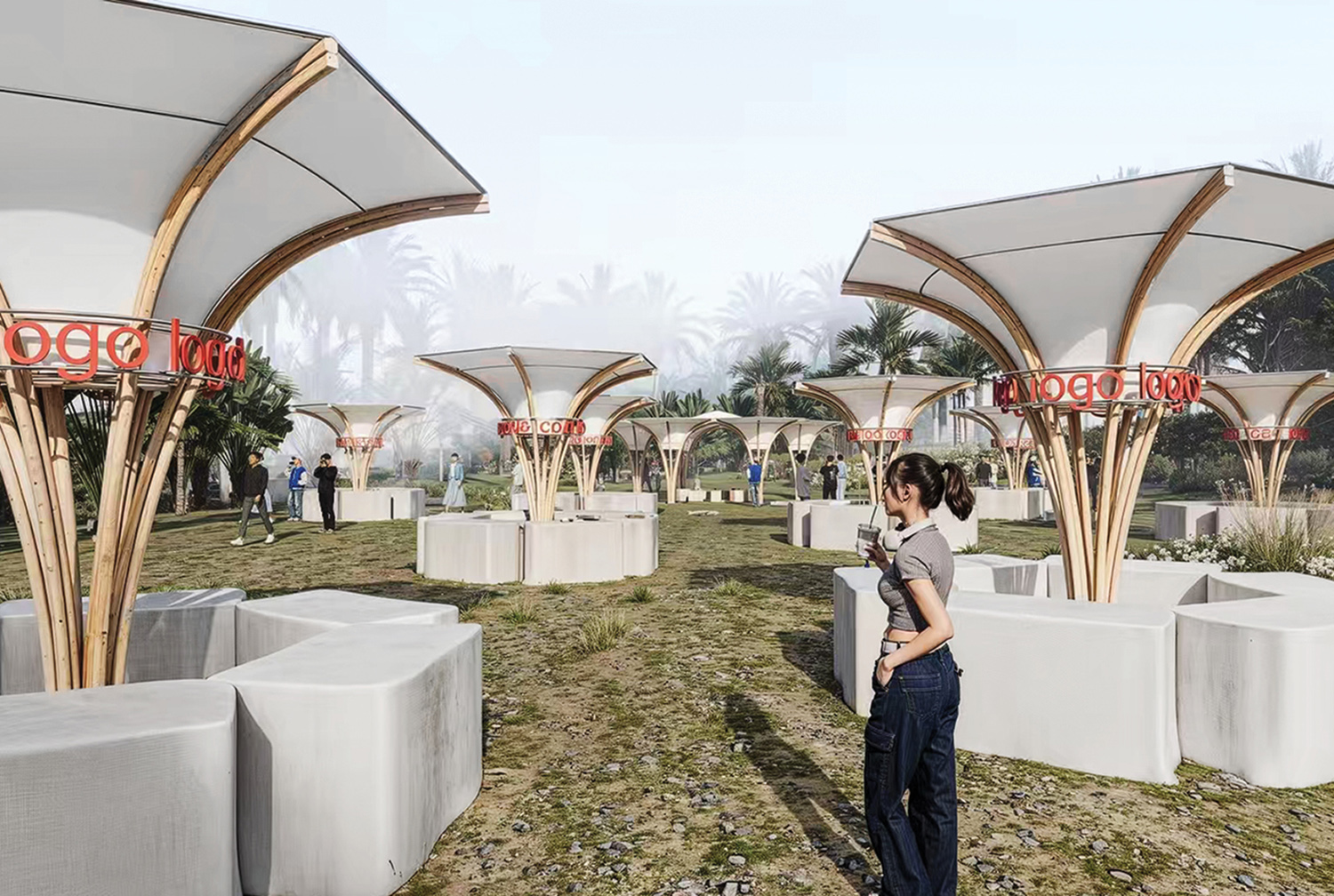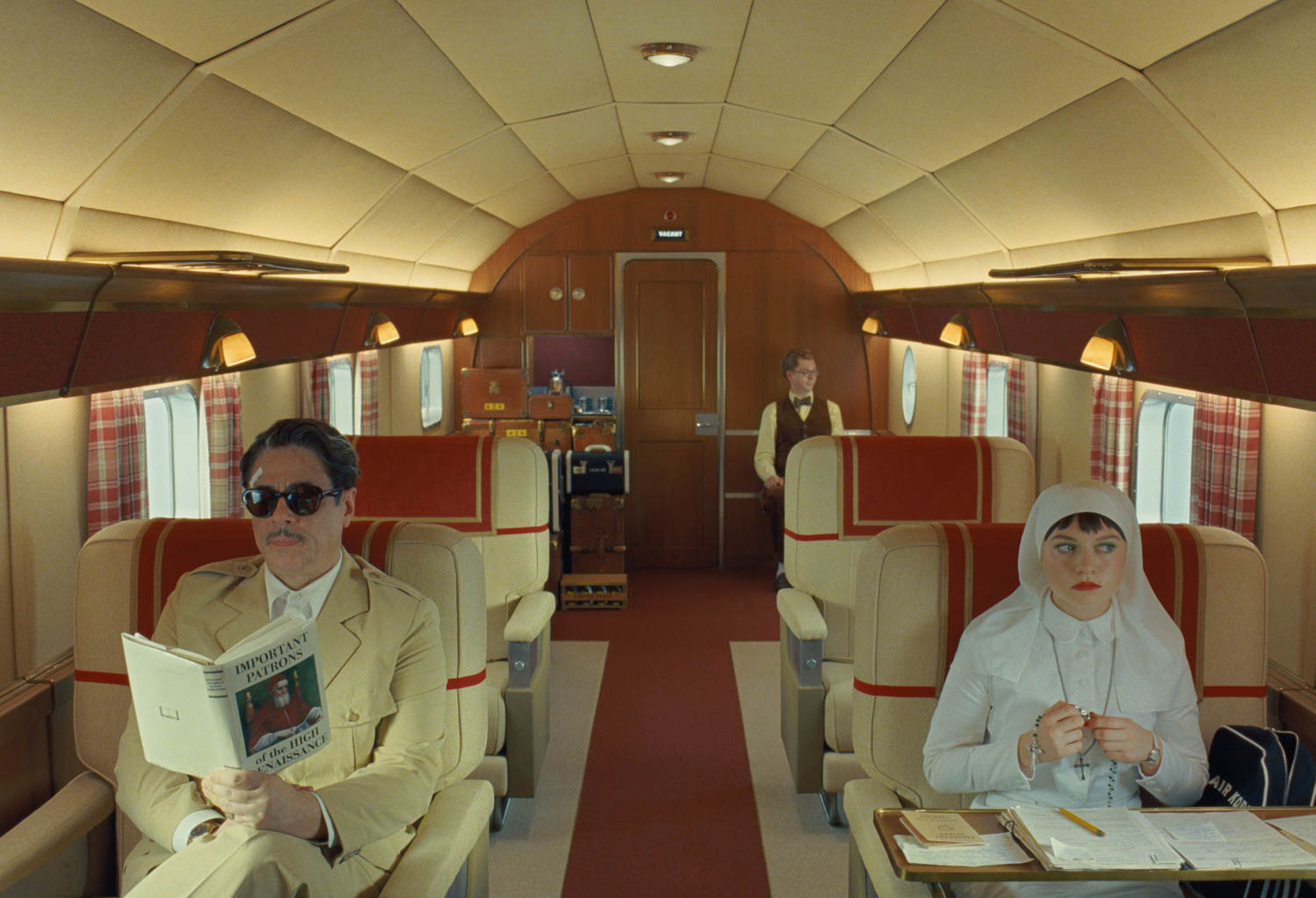10 Questions With… Paul Cocksedge

 “I didn’t have that visiting-art-gallery kind of upbringing,” reveals Paul Cocksedge. Not that this deterred the British designer from jumping thoroughly into the creative arena himself. Since co-founding Paul Cocksedge Studio with fellow Royal College of Art (RCA) alum Joana Pinho in 2004, Cocksedge has earned international recognition for product design, architectural projects, installations, and sculptures, and completed work for the Victoria & Albert Museum, Swarovski, BMW, and Hermès, among others. Some of the studio’s more attention-grabbing projects include a furniture collection created from drilled-out sections of the concrete floor of the space he was getting evicted from, an interactive lighting installation which invited people to kiss under mistletoe during Salone del Mobile, and a living spiral staircase bursting with greenery and social breakout spaces for the Ampersand office building in London.
“I didn’t have that visiting-art-gallery kind of upbringing,” reveals Paul Cocksedge. Not that this deterred the British designer from jumping thoroughly into the creative arena himself. Since co-founding Paul Cocksedge Studio with fellow Royal College of Art (RCA) alum Joana Pinho in 2004, Cocksedge has earned international recognition for product design, architectural projects, installations, and sculptures, and completed work for the Victoria & Albert Museum, Swarovski, BMW, and Hermès, among others. Some of the studio’s more attention-grabbing projects include a furniture collection created from drilled-out sections of the concrete floor of the space he was getting evicted from, an interactive lighting installation which invited people to kiss under mistletoe during Salone del Mobile, and a living spiral staircase bursting with greenery and social breakout spaces for the Ampersand office building in London.
This September, for London Design Festival 2019 (LDF), Cocksedge will unveil “Please Be Seated,” a large-scale feat of engineering with no obvious joints fabricated from repurposed scaffolding planks. The installation will be one of the biggest yet commissioned by Broadgate, a neighborhood co-owned by LDF headlining partner British Land. Interior Design sat down with Cocksedge to learn more about the LDF installation, what intriguing philosophy he has when it comes to choosing furniture for his own home, and to hear the revelation of a long-kept secret from his college days that he is only now confessing.
Interior Design: Could you share a bit more about your upcoming installation at LDF, “Please Be Seated?”
Paul Cocksedge: We were asked to think of something to place in a wonderfully proportioned square near Liverpool Street for the duration of LDF. Our piece is a very curvaceous form that is very technically advanced in terms of how it is made. It consists of three rings or three waves of wood, continually flowing forms, which give you a place to sit and interact, with performance space and shelter. In the end it’s completed by people, who are the last ingredient.
ID: Why scaffolding planks?
PC: British Land is a developer, and when you are walking around the streets of London you see the metal scaffolding and the wood planks, which are a part of their process. You can’t reuse scaffolding planks as scaffolding because they have to comply to health and safety requirements. However, there’s a very innovative interiors company, White & White, that we are collaborating with. They have established a business of collecting all of these pieces, cutting them, sanding them, and repurposing them into floors and walls. The wood is full of texture and tone of color and it’s a very beautiful material to work with.
Although when you are repurposing wood, there’s always a very important consideration: You don’t want people to look at it and think, ‘Oh this is a recycling project.’ That is definitely not how this will look. The repurposing story is the secondary message, after the creation of the form.
Read more: 10 Questions With… Tom Fereday

ID: What else have you completed recently?
PC: At the Norman Public Library Central, in Norman, Oklahoma, we are just about to complete a 45-foot-high wire metal sculpture, “Unbound.” Oklahoma has been one of the most incredible experiences of my life. I’ve never seen a landscape like that before, with the changing weather, the light. It’s a new library and we were invited to pitch for—and then won—the competition for an outdoor sculpture. This is the first time we have done something permanent on this scale. The sculpture has a lightness of touch to it, and really looks like it is suspended in space. Set against a beautiful landscape and the building, it’s a structural, mathematical kind of riddle that we have solved in what we think is the most elegant way.
We also recently completed a small piece of temporary architecture for Art Basel Hong Kong, a lounge for Hong Kong developer Swire Properties, which was holding talk programs with the RCA. It needed to look really beautiful and well-detailed, and yet function in many different ways, from relaxing cafe to presentation space. It was really a fast project that came out better than I was drawing or imagining.
ID: In what kind of home do you live?
PC: I just bought a Victorian house, which is about 100 years old, and moved in a few weeks ago. This was the first one that I saw—and I went around for ages—that looked, somehow, architecturally right. There is something about that period of properties which is so much more charming in comparison to some of the new builds in London. The size and proportions of the windows, the brickwork, the consideration of the volumes of the rooms are just perfect. It has a garden, which is a luxury as well, and beautiful light coming in. We are now in the process of filling it up with designs that we love, and that is something I’ve really never done before. So I am going through a journey of choosing pieces—which is tricky because I need to like the people personally! It would feel weird to be surrounded by them if not.

ID: Can you name a few of the pieces you have selected?
PC: We have Ingo Maurer’s Birdie chandelier as a centerpiece. It’s a beautiful piece that I’ve wanted to have for so long. You don’t need to be a design lover to have a smile when you look at Birdie. But it is not just that—it is incredibly technical and elegant. It drops over a Container table by Marcel Wanders, a very functional piece with a white top and black edge. Wanders filled the central legs with sand so it’s very balanced. And then there’s the Ploum sofa by Ronan and Erwan Bouroullec, which is extremely comfortable and looks fantastic.
ID: How do you think your formative years influenced your design thinking?
PC: My family is not from the art-design background as such. So, I kind of came across it in my own way. It was at RCA, in a way, that the magic happened. Ron Arad was our professor, and I remember looking at him and thinking, this guy seems incredibly happy. Our then rector was Sir Christopher Frayling, who is an extraordinary figure. I was surrounded by these tutors who had passion, and they all seemed very healthy, with their spirits glowing with positive energy. So, I thought, they’ve got this job which isn’t a job, it’s a lifestyle.

ID: How do you think the British design culture has impacted you?
PC: In general, London’s cultural vibe has had an impact on me and my work. There is this enormous history represented within the city itself and portrayed in the museums, while the city has a certain rawness to it, with creative energy bursting everywhere, including in Hackney, where our studio has been for years.
U.K.-wide, I enjoy working with local craftsmen. For example, a lot of our pieces have been manufactured in Liverpool. For our copper and aluminum Freeze desk, which pushes the boundaries of metalwork, we actually relocated to Liverpool where we worked with shipbuilders—their knowledge of the craft is exceptional. It’s a shame that there are not as many manufacturing possibilities in the U.K., but it’s always a joy to produce our pieces here.
ID: Is there a person in the industry that you particularly admire?
PC: Ingo Maurer. He’s always been a supporter of our studio and my mentor at the start. I admire his work and the spirit that he puts into everything he does. His dedication and non-compromising are an immense inspiration—he designs, he manufactures, all on his own terms. It’s a rare thing for a designer to be able to keep it ‘pure.’ Creating this balance is an art.

ID: What are you reading?
PC: I am reading a book called “The Future of Humanity: Terraforming Mars, Interstellar Travel, Immortality, and Our Destiny Beyond Earth” by physicist Michio Kaku. It focuses on life over and beyond our lifetime—terraforming Mars, interstellar travel, the future of AI—basically our destiny beyond Earth. When designing, you zoom in on details and focus on just that one thing, even if in a broader context. There is something about getting a larger perspective on our core existence, realizing where we’ve come from and where we’re headed. Without perspective, we get blinkered.
ID: Do you have a secret you can share?
PC: When I was a student at RCA I was experimenting with polystyrene cups, shrinking them in the oven to create my Styrene light. I accidentally set the fire alarms off and emptied out the entire college—including an auction that was happening downstairs. To this day—well until now—no one knew it was me. The lamp was actually recently on view at the Friedman Benda gallery in New York as part of the “An Accelerated Culture” exhibition.
Keep scrolling to view more images of Cocksedge’s work >
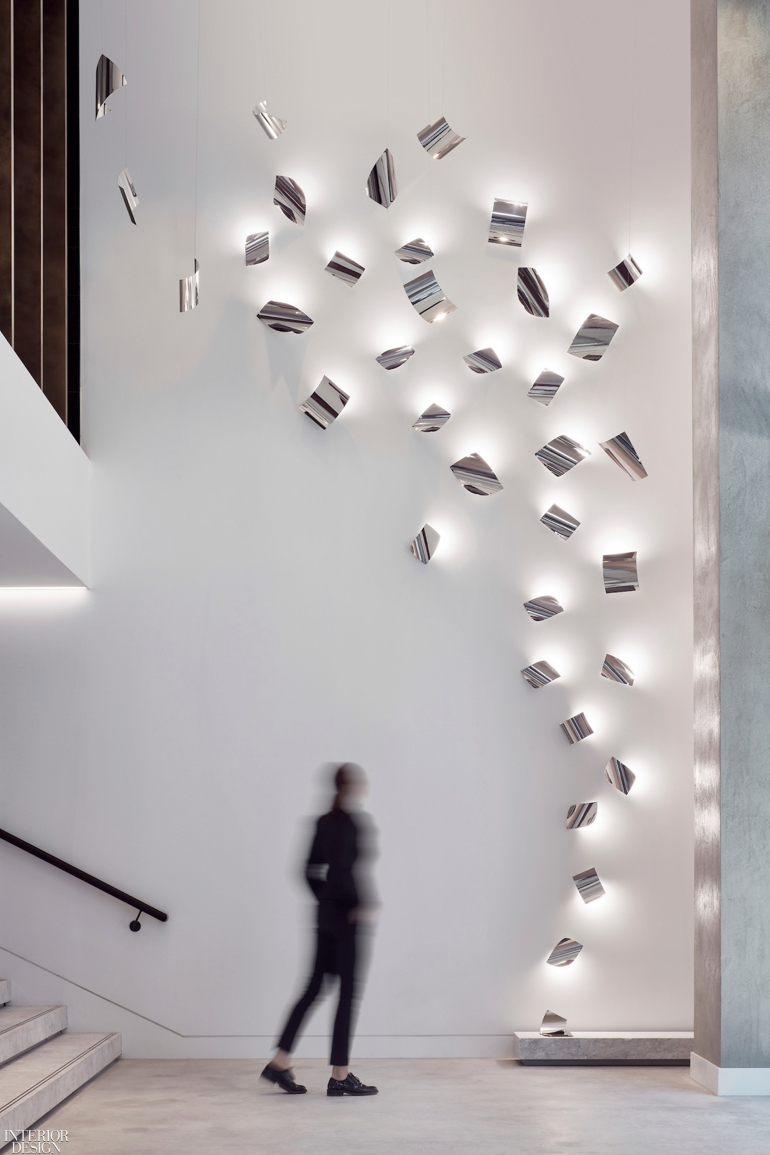
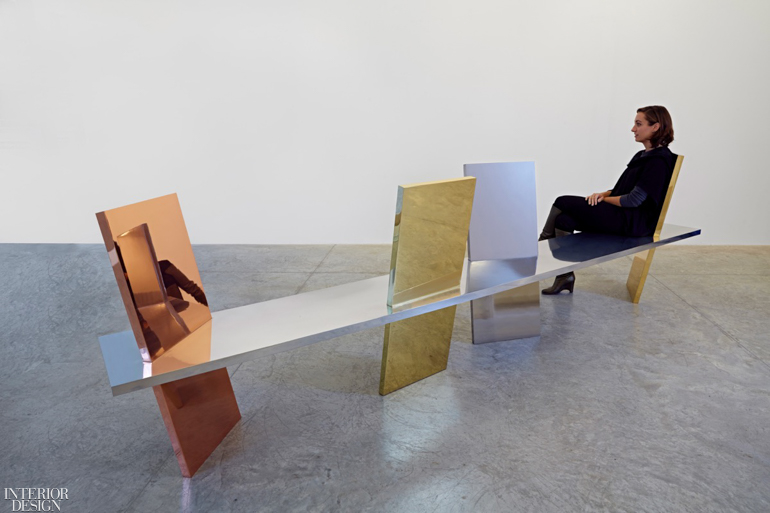





Read more: 10 Questions With… Linda Tegg
